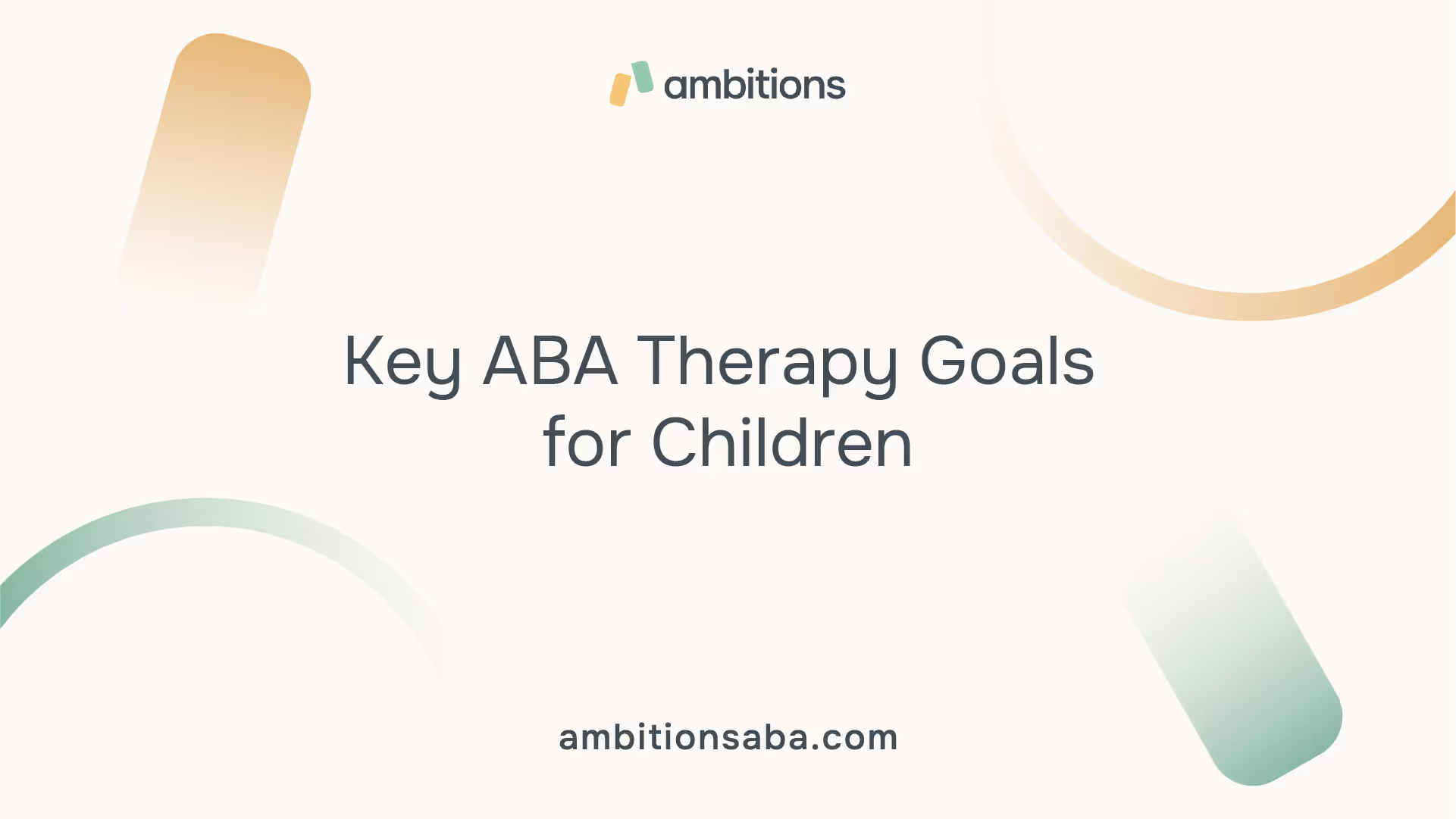Empowering Parents to Foster Communication Skills in Children with Autism
Understanding ABA Therapy
ABA Therapy Overview
Applied Behavior Analysis (ABA) therapy has been an essential approach for supporting children diagnosed with autism and related developmental disorders since the 1960s. Renowned organizations such as the American Psychiatric Association and the U.S. Surgeon General have recognized ABA therapy as an evidence-based best practice treatment. This endorsement underscores its validity and effectiveness as a supportive intervention for individuals with autism.
ABA focuses on teaching skills through structured techniques based on behavioral principles. It aims to improve specific behaviors while decreasing undesired ones. This structured approach involves breaking down skills into smaller, manageable tasks, making it easier for children to grasp new concepts.

Effectiveness of ABA Therapy
Numerous studies highlight the effectiveness of ABA therapy in enhancing outcomes for children with autism. Research has shown that intensive and long-term therapy using ABA principles leads to significant improvements in behavior and skill acquisition. Over 20 studies have corroborated this, demonstrating the positive impact of customized ABA programs [2].
In practice, a board-certified behavior analyst (BCBA) is responsible for developing and overseeing an individualized ABA program tailored to each child’s unique skills and needs. This personalized approach ensures that therapy goals correspond with the child’s learning style and pace.
Study FindingsImpact on Children with Autism20+ studies conductedSignificant improvement in behaviorCustomized plansSkills tailored to each childLong-term therapyEnhanced skill acquisition
ABA therapy is not only beneficial in addressing behavioral challenges but also serves as a framework to build essential life skills. For more information about specific strategies and techniques in ABA therapy, parents may explore related topics such as the role of play in ABA therapy or how to encourage speech in autistic children?.
Designing ABA Therapy Programs
Effective ABA therapy programs are carefully tailored to meet the unique needs of each child with autism. This process involves the collaboration of qualified professionals and an individualized approach.
Role of Board-Certified Behavior Analysts
A board-certified behavior analyst (BCBA) plays a crucial role in designing and overseeing ABA therapy programs. The BCBA customizes the program based on detailed assessments of the child's skills, needs, interests, preferences, and family situation. This comprehensive assessment typically includes observations, interviews with parents or caregivers, and standardized tools to identify the child's strengths and challenges.
Once the BCBA has gathered the necessary information, they write specific treatment goals that align with the child's age and ability level. The goals are intended to foster meaningful behavior change and are developed through discussions with caregivers and direct observations. They are also informed by data collection to track progress over time.
BCBA ResponsibilitiesDescriptionConduct AssessmentComprehensive understanding of the child's skills and needsCreate Treatment GoalsSpecific and measurable objectives based on the assessmentOversee ProgramMonitor implementation and make necessary adjustments
Individualized Treatment Plans
Individualized treatment plans are at the heart of ABA therapy. Each plan is specifically designed to support the child's best interests, taking into consideration their unique developmental stage, needs, and family priorities. This personalized approach ensures that goals focus on various areas, including communication, social skills, and daily living skills, while also addressing any challenging behaviors.
The development of these treatment plans begins with a detailed assessment. The information gathered guides the creation of meaningful and achievable goals, allowing for the transformation of specific behaviors into concrete steps that contribute to the child's success at home and in school.
Key Components of Individualized PlansDescriptionChild's StrengthsLeveraging the child's existing abilitiesSpecific GoalsClear objectives tailored to the child's needsFamily PrioritiesIntegration of family dynamics and preferences
By working closely with a BCBA and implementing individualized treatment plans, parents can help their children progress in meaningful ways. For further guidance on related topics, parents can read about how to encourage speech in autistic children or explore the role of play in ABA therapy.
Goals in ABA Therapy
Setting effective goals in ABA therapy is crucial for fostering progress in children diagnosed with autism. The goals should be crafted with attributes like specificity, measurability, relevance, and achievability to ensure successful outcomes.
Specificity and Measurability
Goals in ABA therapy must be specific and measurable, allowing caregivers and therapists to monitor progress closely. Specific goals define clear and distinct behaviors that the child should work towards, eliminating ambiguity.
For instance, a goal might specify, "Increase the use of five new vocabulary words in conversation," rather than just saying "improve communication." A measurable goal includes metrics to assess progress. For instance, one can track if the child uses those vocabulary words in 80% of opportunities during sessions.
Goal TypeExampleMeasurement ToolCommunicationUse five new vocabulary wordsPercentage of opportunities usedSocial InteractionInitiate a conversationNumber of initiations per sessionDaily Living SkillsComplete self-care routinesPercentage of completion
These measurable goals help therapists and parents understand how well their child is progressing and when adjustments may be necessary. For additional strategies on communication, explore how to encourage speech in autistic children?.
Relevance and Achievability
Alongside specificity and measurability, goals must also be relevant and achievable. Relevance ensures that the goals are meaningful and directly benefit the child’s development. This might mean focusing on areas that will improve the child's daily life, such as enhancing social skills or fostering greater independence in self-care activities.
Achievable goals take into account the child’s current abilities and set realistic milestones. For example, a goal might be to improve eye contact during conversations over a three-month period. Achievable goals help maintain motivation and provide a sense of accomplishment as progress is made.
Goal TypeExampleAchievable GoalsSocial InteractionJoin a group activityAttend one group per weekDaily Living SkillsBrush teeth independentlyBrush teeth with supervision daily
Good goal-setting practices reinforce positive behavior changes and support the child in attaining essential skills that contribute to meaningful progress in their lives. For more tips on goal setting, visit the resources on the role of play in ABA therapy. This collaborative process between caregivers and Board Certified Behavior Analysts (BCBAs) results in goals that cater to the child's unique needs while promoting relevant skills.
Areas of Focus in ABA Therapy Goals
ABA therapy is designed to foster meaningful behavior change in children diagnosed with autism. This involves creating specific goals tailored to the child's unique needs. Here are some key areas of focus in ABA therapy goals:
Communication Skills
Communication is a fundamental skill for children, and ABA therapy emphasizes its development. Goals related to communication skills can include both expressive and receptive language. Common goals may encompass:
The focus on these skills is essential, as effective communication fosters better social interactions and daily functioning. For more insights on encouraging speech in autistic children, check out our guide on how to encourage speech in autistic children?.
Communication GoalSpecific SkillsExpressiveUsing words, complex language, requesting itemsReceptiveFollowing directions, identifying objects, listening comprehension
Social Interactions
Social skills are pivotal for building relationships and participating in community activities. ABA therapy goals typically include fostering interactions with peers and adults. Social objectives can lead to:
By enhancing social interactions, children can improve their quality of life and develop lasting relationships. For additional support strategies, refer to our articles on autism-related anxiety and autism aggression.
Social Interaction GoalSpecific SkillsInitiating ConversationsStarting and maintaining dialoguesResponding AppropriatelyUnderstanding social cues
Daily Living Skills
Daily living skills are crucial for independence and self-sufficiency. ABA therapy goals often focus on teaching children the necessary skills to navigate their daily routines effectively. Key objectives may include:
Strengthening these skills not only promotes independence but also builds confidence in the child's ability to manage everyday tasks. For tips on creating visual schedules that assist with daily living, explore our article on how to create visual schedules for autism?.
Daily Living Skills GoalSpecific SkillsSelf-CarePersonal hygiene, dressingHouseholdAssisting with chores, meal prep
ABA therapy encompasses a broad spectrum of goals focused on enhancing a child's communication, social, and daily living skills. Prioritizing these areas significantly contributes to the child's overall development and success in various settings. For more comprehensive information on goals, strategies, and outcomes, visit our page on ABA therapy goals for children.
Implementation of ABA Therapy Goals
Implementing ABA therapy goals effectively involves creating customized strategies and regular data collection to monitor progress. This ensures that the therapy remains tailored to the child's unique needs and can adapt as required.
Customized Strategies
Customized strategies in ABA therapy play a crucial role in ensuring that interventions are effective for each child. These strategies are designed based on the child's individual assessments, taking into account their developmental stage, needs, preferences, and family priorities. Approaches used include:
Each of these strategies can be personalized to fit the child's learning style and specific behavioral needs. The goal is to foster improvements in communication, social skills, and adaptive behaviors while reducing challenging behaviors.
Data Collection and Progress Monitoring
Continuous data collection is fundamental in ABA therapy. It enables therapists and parents to track the child's progress and make necessary adjustments to the treatment plan. ABA therapy employs various data collection methods depending on the goals set. Here are common types of data collected:
Type of GoalExamplesData Collection MethodsBehavioral GoalsDecreasing instances of aggressionFrequency recording, ABC dataCommunication GoalsImproving verbal expressionsEvent recording, duration recordingSocial Skills GoalsFostering appropriate peer interactionsAnecdotal records, social skills checklists
Monitoring progress through these data collection techniques allows therapists to see which strategies are effective and which may need modifications. This ongoing assessment helps in the timely adjustment of goals, ensuring the child continues to make significant progress towards their objectives.
Incorporating these methods into a comprehensive therapy framework assists practitioners in enhancing the effectiveness of ABA therapy while supporting the growth of children diagnosed with autism. For more support strategies, check out resources on managing autism-related issues like how to handle autism-related anxiety? and how to encourage speech in autistic children?.
Impact and Outcomes of ABA Therapy
ABA therapy plays an important role in helping children diagnosed with autism reach their full potential. By focusing on specific goals and monitoring progress, families can gain insights into their child's development and the effectiveness of the therapy.
Tracking Therapy Progress
Tracking the progress of ABA therapy is essential for ensuring that the treatment remains effective and adapted to the child's changing needs. Goals should be set to be specific, measurable, achievable, and flexible. Regular assessments and feedback from therapists help families understand how their child is advancing.
Maintaining records of each session can provide insight into improvements and challenges faced. This may involve:
Progress Tracking MethodDescriptionSession NotesDocumenting activities and behaviors observed during therapy.Behavior LogsKeeping track of specific behaviors and their frequency across different settings.Family FeedbackGathering observations from parents and caregivers about changes they notice.Emotional Check-InsParents and children reflecting on emotions and triggers to identify growth over time.
Therapists often encourage families to seek feedback from trusted friends or support groups, as outside perspectives can provide additional insights that parents may overlook [7].
Personalized Therapy Approach
A personalized approach is crucial in ABA therapy. Each child receives an individualized treatment plan developed and overseen by a board-certified behavior analyst (BCBA), tailored to their unique skills, interests, and family contexts [3]. This customization ensures that therapy is relevant and engaging, promoting better outcomes.
Family involvement is vital. Parents learn strategies to support their child's development at home and in the community, reinforcing the skills taught during ABA sessions. As the child develops, goals are regularly revisited and updated, keeping the therapy aligned with their current needs.
The relationship between the therapist and the child is also essential. A strong therapeutic alliance can lead to better results, as it fosters a supportive environment for learning [8]. In addition, a focus on functional improvements helps guide the therapy, emphasizing the child's overall ability to interact and function in everyday situations.
For parents looking for guidance during this process, resources on how to handle autism-related anxiety and how to encourage speech in autistic children can provide additional support in managing their child's needs.
References
[2]:
[3]:
[4]:
[5]:
[6]:
[7]:
[8]:

